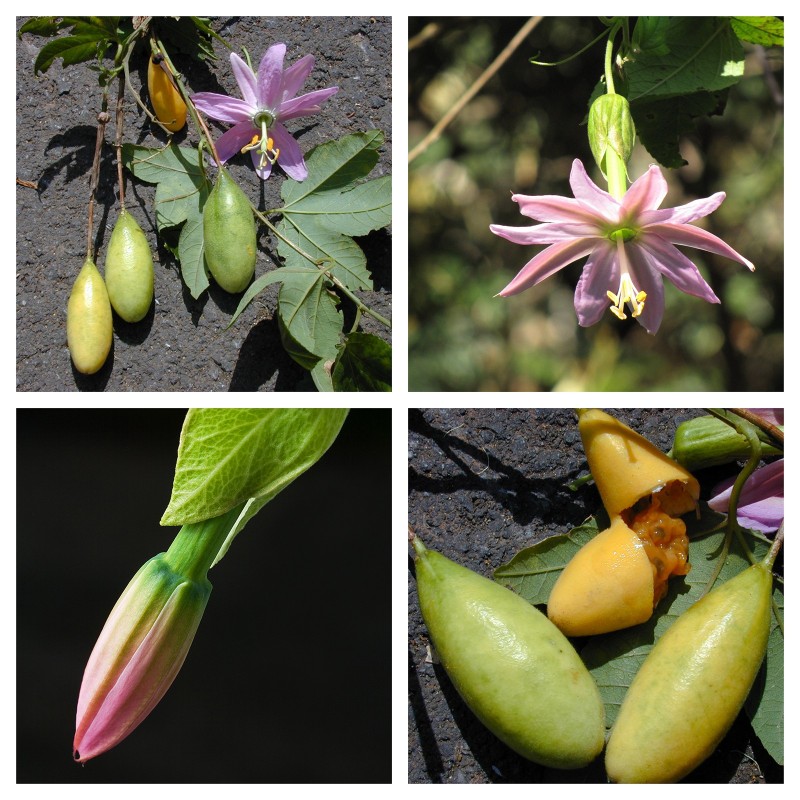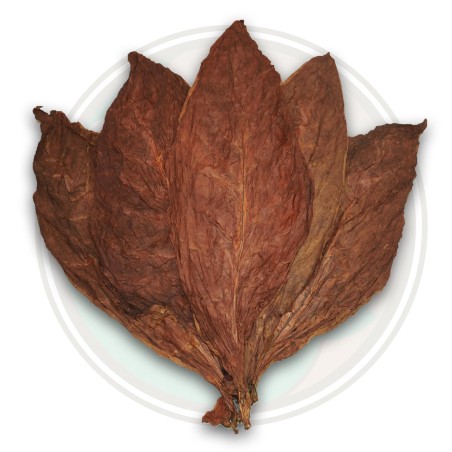
Passiflora tarminiana Seeds (banana passionfruit)
🌱 Passiflora tarminiana Seeds (Banana Passionfruit)
💰 Price: Package of 5 seeds
🌸 🌿 Origin & History: Passiflora tarminiana, commonly known as banana passionfruit, is a high-climbing tropical vine native to the uplands of South America. It is widely cultivated for its delicious and nutritious fruit, second only in cultivation popularity to Passiflora tripartita var. mollissima. Its edible yellow-orange fruits contain sweet orange pulp and small black seeds, which are enjoyed fresh or in various culinary preparations. The plant has now spread globally, cultivated in Hawaii, New Zealand, and other tropical regions, although in some areas it is considered invasive. Local names vary greatly: curuba, curuba de Castilla, or curuba sabanera blanca in Colombia; taxo, tacso, tagso, tauso in Ecuador; parcha, taxo in Venezuela; tumbo or curuba in Bolivia; and tacso, tumbo del norte, trompos, tintin, or purpur in Peru.
🌱 Plant Characteristics:
This vigorous climber features hairy stems and petioles, with small stipules (4–7 × 2–3 mm) at the leaf axils that are quickly deciduous. Leaves are typically three-lobed, hairy on the underside but often smooth above. The flowers are solitary, pendulous, and highly ornamental. Each flower has pale green bracts at its base that enclose a swollen nectary chamber, a floral tube (hypanthium) measuring 6–8 × 0.7–1 cm, and reflexed sepals and petals that are pink, 3–6 cm long, arranged perpendicularly to the floral tube. This striking floral structure not only attracts pollinators but also contributes to the vine’s ornamental appeal.
🍊 Fruit Appearance & Taste:
The banana passionfruit is named for its elongated yellow fruits, tapering at both ends, typically 10–14 cm long and 3.5–4.5 cm wide. When ripe, the fruits turn bright yellow or light orange and contain numerous small black seeds embedded in a sweet, edible orange aril. The pulp is highly aromatic and flavorful, suitable for fresh consumption, juicing, desserts, and even culinary sauces. The flavor profile is a delightful mix of tropical sweetness and subtle acidity.
🌿 Cultivation & Care:
Passiflora tarminiana thrives in tropical and subtropical climates but can also grow in temperate zones with protection. It prefers full sun to partial shade and well-draining soil rich in organic matter. As a climbing vine, it requires trellises or fences for support. Regular watering is essential, particularly during the growing and fruiting seasons, while moderate fertilization promotes vigorous growth and abundant flowering. Being more disease-resistant than P. tripartita var. mollissima, it is an excellent choice for home gardeners seeking a robust tropical fruit vine.
🌱 Propagation & Sowing Instructions:
-
Propagation: Seeds
-
Pre-Treatment: Optional soaking for 12–24 hours to enhance germination
-
Sowing Mix: Loose, fertile soil with good drainage, optionally mixed with sand or perlite
-
Germination Temperature: 20–28 °C
-
Germination Time: 2–4 weeks
-
Location: Bright, well-ventilated area; avoid waterlogging
-
Watering: Keep soil evenly moist, reduce during dormancy
🌟 Uses & Benefits:
The banana passionfruit is not only visually appealing in gardens but also highly nutritious. Rich in vitamins and minerals, it supports digestion, boosts immunity, and adds vibrant flavor to dishes. The vine’s rapid growth, impressive flowers, and delicious fruit make it a must-have for tropical fruit enthusiasts and ornamental gardeners alike.


Your review appreciation cannot be sent
Report comment
Report sent
Your report cannot be sent
Write your review
Review sent
Your review cannot be sent
🌍 Global Delivery from the EU
We ship worldwide from the European Union via registered mail with delivery confirmation.
📦 Shipment Tracking
To find your tracking number, log in to your account and go to Order History > Details.
Global tracking: 17Track
For tracking numbers like RGxxxxxxHR: Posta.hr tracking
🕒 Note: Tracking information becomes available up to 24 hours after your order is shipped.
⚠️ Important Notices
Cash on delivery is not available.
Regularly check your spam/junk email folder for notifications.
All inquiries must be submitted via our contact form on the website.
Messages sent via regular email may not be received.
📱 Required at Checkout
Always include your mobile phone number with international dialing code.
Example for Hungary: +36 20 123 4567
🚚 Delivery Policy
Registered shipments require a signature from the recipient.
We do NOT deliver:
to P.O. boxes
to neighbors
if you are not home to receive the package
📬 If a P.O. box address is provided and the package is lost or undeliverable, it will not be refunded.
↩️ Return & Reshipping
If your package is returned to us:
You will be charged €2 for return shipping
You are responsible for reshipping costs as well
⏱ Delays & Tracking Issues
If tracking shows the package is still with the sender, it means it is in transit.
Contact your local post office with the tracking number for updates.
We are not a postal service and cannot track your package for you.
We are not responsible for shipping delays.
🔍 We can only start an investigation into a lost shipment 30 days after the dispatch date.
✈️ Delivery Options
| Type of Delivery | Processing Time | Insured | Possible Delays | Notes |
|---|---|---|---|---|
| Standard | 7–10 business days | ❌ | 7–14 days | Basic shipping option |
| Priority | 1–7 business days | ❌ | 3–10 days | Faster processing, not faster shipping |
| Insured | 1–7 business days | ✅ | 3–10 days | Refund if the package is lost (up to €150) |
🕒 Estimated Delivery Time:
Within the EU: 3–20 days
Worldwide: 5–30 days
Example delivery times to the USA: 27, 22, 19, 17, 13 days
💳 Payment Options
💶 Bank Transfer (SEPA / IBAN / SWIFT-BIC)
Always include your order reference (e.g., SGS-19811702) in the payment description.
If we cannot match your payment to your order, it may cause delays or cancellation.
Orders are automatically canceled if payment is not received within 7 days.
🅿️ PayPal
We accept EUR currency only via PayPal.
Please change your currency to Euro during checkout.
💳 Card Payment
Visit: Exotic Seeds Store
We accept: Visa, MasterCard, American Express, CB, Diners Club, Discover, China UnionPay, JCB, etc.
💡 Buyers are responsible for all transaction fees. Please send us your transaction details so we can process your order promptly.
📅 Other Information
Orders are not processed or shipped on Saturdays or Sundays.
Always check the Important Notices on our website before placing an order (e.g., holiday schedules, special conditions).
📫 For any questions, please use only the contact form on our website.
Emails sent outside of this form will not be received.
Related Products



















